Aptamer selection and applications for breast cancer diagnostics and therapy
- PMID: 29132385
- PMCID: PMC5683342
- DOI: 10.1186/s12951-017-0311-4
Aptamer selection and applications for breast cancer diagnostics and therapy
Abstract
Aptamers are short non-coding, single-stranded oligonucleotides (RNA or DNA) developed through Systematic Evolution of Ligands by Exponential enrichment (SELEX) in vitro. Similar to antibodies, aptamers can bind to specific targets with high affinity, and are considered promising therapeutic agents as they have several advantages over antibodies, including high specificity, stability, and non-immunogenicity. Furthermore, aptamers can be produced at a low cost and easily modified, and are, therefore, called "chemical antibodies". In the past years, a variety of aptamers specifically bound to both breast cancer biomarkers and cells had been selected. Besides, taking advantage of nanomaterials, there were a number of aptamer-nanomaterial conjugates been developed and widely investigated for diagnostics and targeted therapy of breast cancer. In this short review, we first present a systematical review of various aptamer selection methods. Then, various aptamer-based diagnostic and therapeutic strategies of breast cancer were provided. Finally, the current problems, challenges, and future perspectives in the field were thoroughly discussed.
Keywords: Aptamer; Breast cancer; Diagnosis; SELEX; Targeted therapy.
Figures
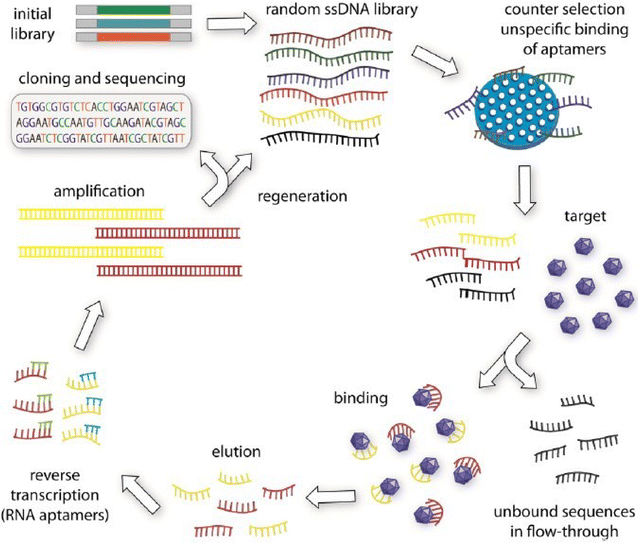
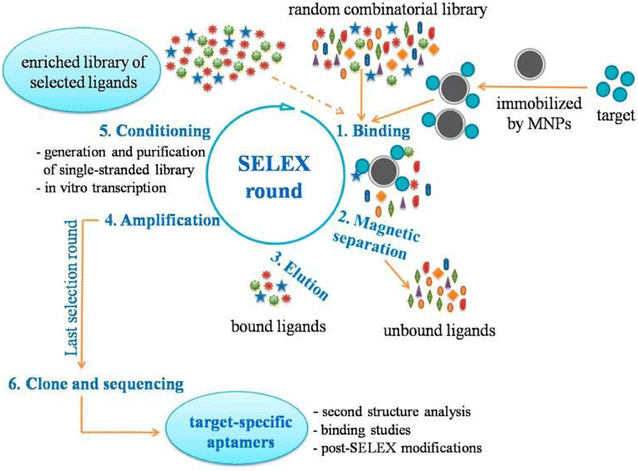

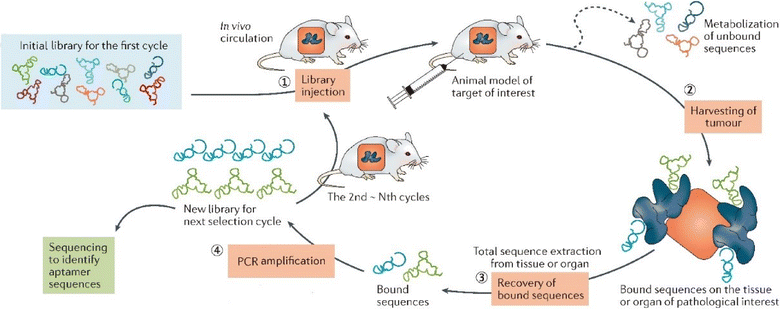


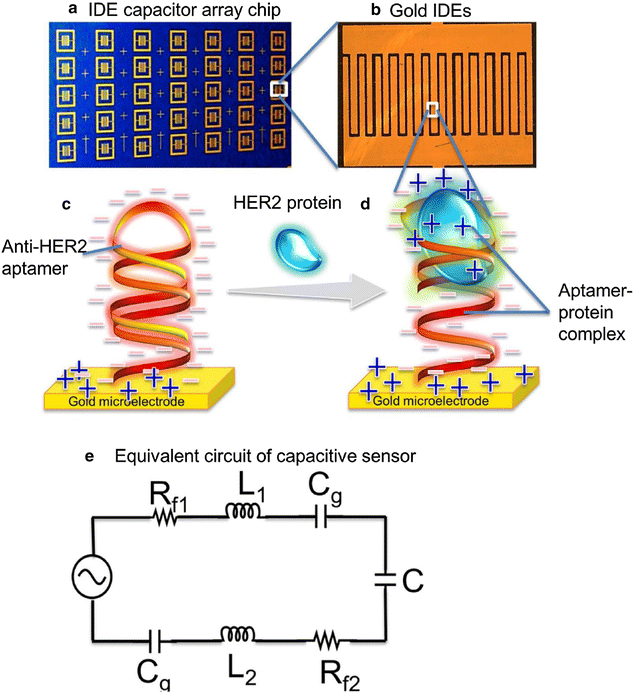
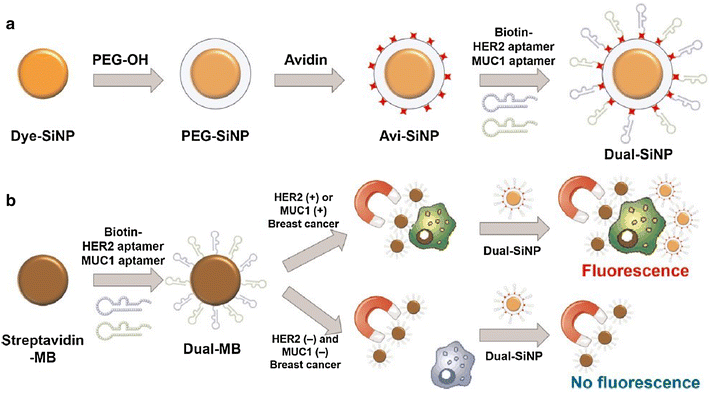


Similar articles
-
Advances in Aptamers-Based Applications in Breast Cancer: Drug Delivery, Therapeutics, and Diagnostics.Int J Mol Sci. 2022 Nov 21;23(22):14475. doi: 10.3390/ijms232214475. Int J Mol Sci. 2022. PMID: 36430951 Free PMC article. Review.
-
Selection of DNA Aptamers Recognizing EpCAM-Positive Prostate Cancer by Cell-SELEX for in vitro and in vivo MR Imaging.Drug Des Devel Ther. 2021 Sep 21;15:3985-3996. doi: 10.2147/DDDT.S322854. eCollection 2021. Drug Des Devel Ther. 2021. PMID: 34584404 Free PMC article.
-
Aptamers used for biosensors and targeted therapy.Biomed Pharmacother. 2020 Dec;132:110902. doi: 10.1016/j.biopha.2020.110902. Epub 2020 Oct 20. Biomed Pharmacother. 2020. PMID: 33096353 Free PMC article.
-
Generating aptamers by cell-SELEX for applications in molecular medicine.Int J Mol Sci. 2012;13(3):3341-3353. doi: 10.3390/ijms13033341. Epub 2012 Mar 12. Int J Mol Sci. 2012. PMID: 22489154 Free PMC article. Review.
-
Aptamers in hematological malignancies and their potential therapeutic implications.Crit Rev Oncol Hematol. 2016 Oct;106:108-17. doi: 10.1016/j.critrevonc.2016.08.003. Epub 2016 Aug 13. Crit Rev Oncol Hematol. 2016. PMID: 27637356 Review.
Cited by
-
Breast Cancer Aptamers: Current Sensing Targets, Available Aptamers, and Their Evaluation for Clinical Use in Diagnostics.Cancers (Basel). 2021 Aug 6;13(16):3984. doi: 10.3390/cancers13163984. Cancers (Basel). 2021. PMID: 34439139 Free PMC article. Review.
-
Applications of Aptamer-Bound Nanomaterials in Cancer Therapy.Biosensors (Basel). 2021 Sep 18;11(9):344. doi: 10.3390/bios11090344. Biosensors (Basel). 2021. PMID: 34562934 Free PMC article. Review.
-
A Novel ssDNA Aptamer Targeting Carcinoembryonic Antigen: Selection and Characterization.Biology (Basel). 2022 Oct 20;11(10):1540. doi: 10.3390/biology11101540. Biology (Basel). 2022. PMID: 36290442 Free PMC article.
-
The Advent of Salivary Breast Cancer Biomarker Detection Using Affinity Sensors.Sensors (Basel). 2019 May 23;19(10):2373. doi: 10.3390/s19102373. Sensors (Basel). 2019. PMID: 31126047 Free PMC article. Review.
-
Selection and identification of an ssDNA aptamer against influenza B virus hemagglutinin protein.Virol J. 2025 Mar 7;22(1):64. doi: 10.1186/s12985-025-02657-2. Virol J. 2025. PMID: 40050943 Free PMC article.
References
Publication types
MeSH terms
Substances
Grants and funding
- 2017YFA0205300/the National Key Research and Development Program of China
- SKLOD2017OF04/Open Funding of State Key Laboratory of Oral Diseases
- 2016T90403/China Postdoctoral Science Foundation
- (2013) 448/the Economical Forest Cultivation and Utilization of 2011 Collaborative Innovation Center in Hunan Province
LinkOut - more resources
Full Text Sources
Other Literature Sources
Medical
Research Materials
Miscellaneous

